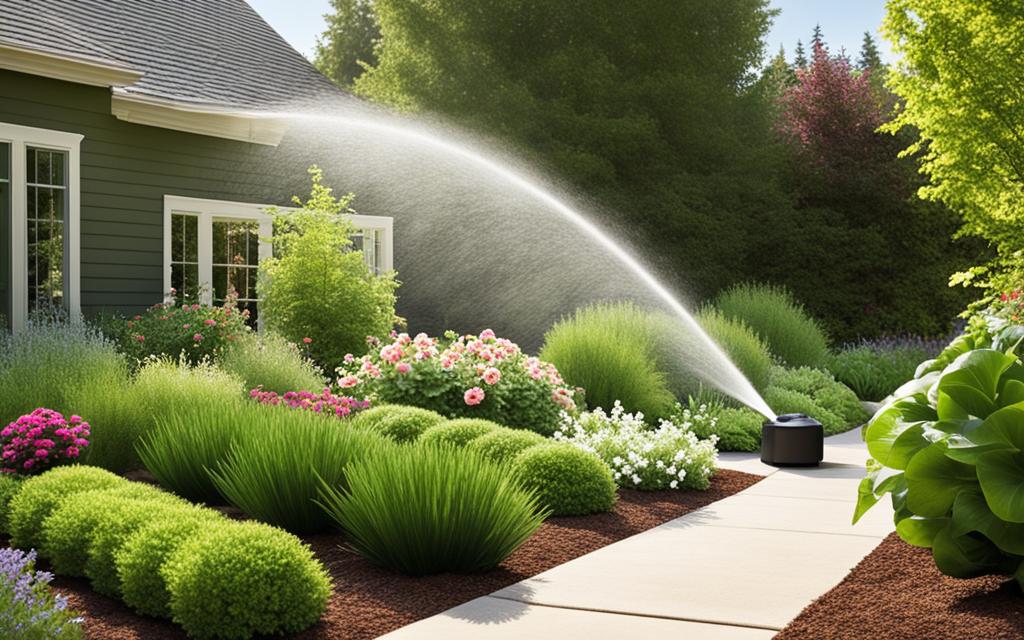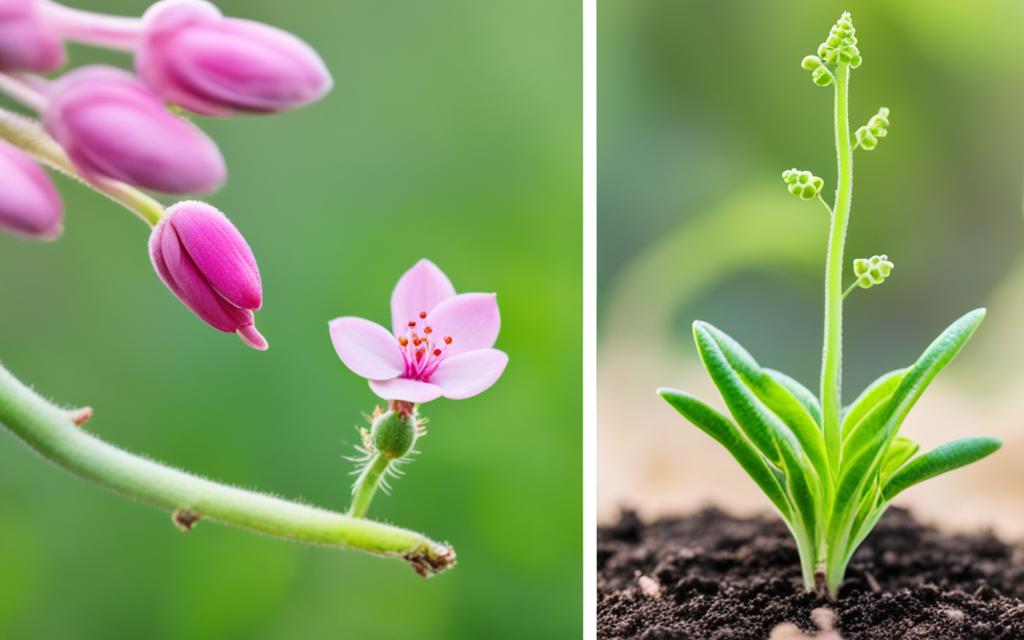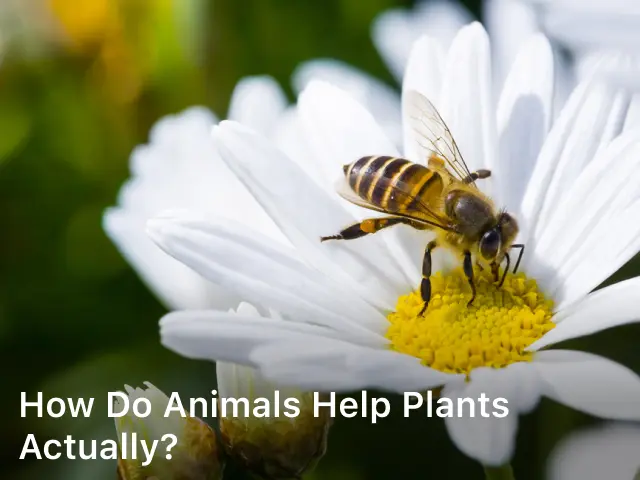How to Keep Deer From Eating Plants: Effective Tips

In this guide, we’ll look at many ways to keep deer away from your garden. Maybe deer visit sometimes, or perhaps they’re always there. We’ve got solutions to keep your deer resistant plants safe. We’ll talk about using natural deer repellents, making your garden hard for them to eat, or scaring them off. Let’s start making your outdoor space deer-proof.
Understanding the Deer Dilemma
Deer eating your garden plants is a big problem. You need to know why they do it and how it affects your garden. With less space in the wild, deer look for food in gardens.
Why Deer Devour Gardens
Deer see gardens as endless food options. The variety of plants, fruits, and vegetables draw them in. Their shrinking homes push them closer to humans, increasing the garden problem.
The Impact of Deer on Plant Life
Deer damage plants in a big way. They can eat whole gardens and ruin them. This destruction affects the look and health of your garden. It also hurts the plants you grow for food.
Learning about why deer eat plants helps us stop them. We can use strategies to keep our plants safe from these hungry visitors.
Deer-Resistant Plant Varieties
To keep deer from eating your garden, pick plants they don’t like. Some plants, from herbs to trees, have ways to keep deer away. They might have strong smells, bitter tastes, or prickly leaves. By adding these plants to your garden, you can protect your flowers and plants from deer.
Herbs and Annuals Deer Tend to Avoid
Some plants, like lavender and rosemary, give off scents deer don’t like. Herbs like sage and thyme can also help keep deer away. For flowers, try marigolds, petunias, and lantana. These annuals can add color and fragrance to your garden while keeping deer at bay.
Deer-Resistant Shrubs and Trees
There are also shrubs and trees that deer usually avoid. Plants like boxwood and sumac have hard leaves and thorns that deter deer. Trees such as Eastern red cedar and oak aren’t tasty to deer either. Adding these shrubs and trees can protect your garden all year long.
Physical Barriers: Fencing and Netting
Keeping deer away often works best with physical barriers. Fencing and netting are very effective ways to do this. We’ll look into various kinds of deer fencing. This includes electric, woven wire, and high-tensile barriers. We’ll also talk about what to think about when you pick the one right for your yard.
Types of Deer Fencing
There are several different kinds of deer fencing. Each type has its benefits and things to think about. Electric fencing uses a small shock to deter deer. Woven wire fences are hard for deer to get through. High-tensile fencing is very strong, able to stop deer from coming in. When picking deer fencing, think about your budget, what looks good, and what your yard needs.
Installing Deer Netting Properly
For plants, deer netting can also work well. When put up the right way, it stops deer from eating your plants. Make sure you follow the best steps to put up the netting. This means making it secure to the ground and using strong posts. If you do this, it can keep deer out for a long time.
How to Keep Deer From Eating Plants: Repellents and Deterrents
We can use a range of repellents and deterrents to keep deer out of our gardens. These are effective and won’t cost a lot. You can either buy commercial deer repellents or make your own. Both work well against deer.
Commercial Deer Repellents
Commercial deer repellents have things that smell or taste bad to deer. This keeps them from eating your plants. You can put these products directly on your plants or around the garden’s edge. Ingredients like garlic, capsaicin, or predator urine are common in these repellents. They make deer want to stay away. Used correctly, these repellents are great for protecting your plants.
DIY Deer Repellent Recipes
Homemade repellents can save you money. You can make them with things from your home, like garlic or essential oils. These work well to keep deer off your plants. By mixing a few items, you can create a deterrent that makes your garden unappealing to deer. With some simple ingredients and creativity, you can defend your garden against deer.
Motion-Activated Sprinklers and Lights
Keeping deer away is easier with motion-activated devices. These devices surprise and discourage deer. You can set up motion-activated sprinklers and lights in your garden. They make the area unwelcoming for deer.
When a deer walks by, these tools can spray water or shine lights. This action startles deer and makes them want to leave. We’ll share tips on how to set up and use these tools. This will help you protect your plants better from deer.
| Motion-Activated Sprinklers | Motion-Activated Lights |
|---|---|
| Sudden water spray startles deer | Bright lights deter deer from entering |
| Covers a wide area of your garden | Illuminates dark areas to discourage deer |
| Requires strategic placement for optimal coverage | Can be used with other deer prevention methods |
| Offers continuous, automated deterrent | Versatile for various types of gardens |
Using both sprinklers and lights is a smart way to fight off deer. It gives your garden a strong defense. Make sure to place these devices well. This makes them work even better with your other deer protection methods.

Scare Tactics: Noisemakers and Decoys
We can use scare tactics to keep deer out of your garden. Noisemakers and decoys help create a place the deer won’t want to visit. This makes your garden less appealing to them.
Using Noisemakers Effectively
Noisemakers such as wind chimes or loud electronic devices can help. They surprise the deer and make them think twice about staying. Place these around your garden’s edges to scare the deer away.
To get the most out of noisemakers, try different types and sounds. This keeps the deer from getting used to a single noise. Changing things up will help keep them away.
Decoy Strategies to Fool Deer
Deer decoys are another good trick. Place realistic deer statues or silhouettes of predators in your garden. This makes deer believe your space is dangerous, so they stay out.
Using decoys with other strategies can make your garden seem even less safe to deer. Try moving the decoys around to add to the surprise. This way, the deer won’t know what to expect.
By using a mix of tactics and barriers, you can protect your plants from hungry deer. Always check to see what works and change your plan if needed. Staying flexible is key to keeping your garden deer-free.
Deer-Proofing Your Garden
There are practical ways to keep deer out beyond just using deterrents. You can use landscaping and maintenance to make your garden less attractive to them. This way, you build a strong defense against deer.
Landscaping Tips to Deter Deer
Creating a space that’s less welcoming can help. Plant thick hedges or add things that are hard for deer to get through, like sharp bushes. Using plants that deer don’t like can also be part of your strategy.
Proper Fencing and Barrier Maintenance
It’s key to keep your fences and barriers in good shape. Check them often for damage. If you find any issues, fix them right away. This work makes sure your garden is truly safe from deer.
Humane Deer Management Practices
When deer enter your garden, we must think not just about scaring them off. It’s key to use methods that are kind to deer. We should teach our neighbors why we should live together with deer. Also, we should work with local groups to handle deer numbers in the right way.
Educating the Community
Getting everyone in the community on the same page is important. We can balance protecting our gardens with letting deer live in peace. Talk to your neighbors about humane deer control. Say we need everyone to come together to deal with this. Give out info showing why deer are good for the area. This includes keeping the environment healthy.
Collaborating with Local Authorities
It’s smart to team up with local experts and authorities on wildlife. They can suggest the best ways to control deer populations. This might include moving them to new areas, using birth control, or managing their living spaces better. By working with these groups, we can make a plan that’s good for our garden and the deer.
Using kind ways to deal with deer and bringing the community together helps us find the right balance. This balance means we can protect our gardens and welcome deer in our area.
Monitoring and Adapting Your Strategies
Keeping deer away from your garden is an ongoing task. You need to check your garden often and adjust your methods. This means looking for signs that your deterrents are working and watching how deer act.
By doing this, you can make sure your strategies are always up to date. This way, you protect your plants from deer.
Regular Garden Inspections
Inspecting your garden regularly is key. It helps you see what’s working against the deer. You should walk around your outdoor spaces and look for signs like footprints, droppings, or plant damage.
Noticing these signs can tell you where you need to work harder. It’s important to keep an eye on your deer deterrent methods.
Adjusting Tactics Based on Deer Behavior
Keep an eye on how the deer act in your garden. If something isn’t working, it’s time to change or add to your strategies. You might need to fix your fence, use different deer repellents, or try scaring the deer in new ways.
Staying flexible and alert is key to keeping your garden safe from deer. Always paying attention and making changes will help you protect your plants.
Conclusion
Keeping your plants safe from deer can be quite a challenge. But, by using smart strategies, we can fight back. Strategies like using deer-resistant plants and putting up fences can really help. Don’t forget about using devices to scare them off and putting smells they don’t like around. It’s important to also be kind to the deer and check how well our plans are working. If we stay smart and keep trying, our gardens can be safe from deer.
Thanks to the advice in this guide, we’re closer to a garden free of deer damage. This advice works whether you see deer often or once in a while. By following these steps, we can protect our plants and make our gardens beautiful. So, be positive and enjoy your garden without worry.
By following these tips, we can stop deer from eating our plants. Also, we can learn to live well with the deer nearby. With some effort, our gardens can be full of life and safe from deer. Let’s work together to make this happen.





